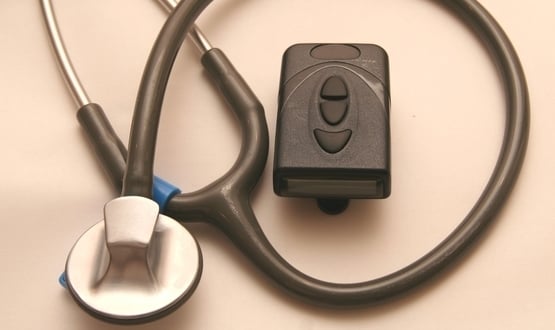NHSX looking to create framework for communication solution
- 22 May 2020

NHSX is looking to create a framework for NHS trusts to procure communication services in a bid to help phase out pagers.
A tender notice, published on 1 May, revealed the Covid-19 pandemic has “accelerated the need to urgently deliver” health secretary Matt Hancock’s plan to phase out pagers by the end of 2021.
The notice adds: “NHS organisations require dedicated communications and task management systems to enable save staff time by reducing their need to use the historic ‘bleep’ system or by sending emails.
“Staff need to share clinical information quickly and securely whilst at work but they should be able to be turned off when not at work.”
NHSX is looking for “potential suppliers” to provide feedback on the creation of a Clinical Communication Tools framework as well as preparing them for a future procurement, which is due to begin in June 2020.
The contract value is listed at £3million, with the intention for the framework to remain open for two years with a potential extension for 12 months.
Mandatory requirements include; secure messaging, image sharing, staff directory linked to the global NHS.net address book and calls.
Solutions also have to be compliant with GDPR and UK data protection laws.
It is hoped such tools will “address critical pain points for clinical and/or operational teams” and can be “be downloaded onto mobile devices or tablet device”.
Hancock announced in February 2019 that he was going to war with pagers. All hospital trusts are expected to have plans and infrastructure in place to ensure their phase our is possible by the end of September 2020.
Staff are expected use modern alternatives, such as mobile phones and apps, which can deliver more accurate two-way communications at a reduced cost.





2 Comments
Is there a business – or any other – case for removing pagers?
How would a replacement fill the practical functions a pager fills?
1. pagers are function specific, not individual specific; i.e. a pager labelled “crash team” doesn’t go off duty..
2. pagers give brief standardised messages – helpful both for those sending messages *and* those receiving them: crash team only need to know where the emergency is.
3. pagers are not distracted by all the other urgent (but not requiring instantaneous action) messages which could compete with a life-&-death situation
So just asking: would the proposed replacements for pagers be able to serve the functions for which pagers were previously used? If not, how will those functions be served?
Having been ‘slapped-down’ once for this suggestion, nevertheless I am going to repeat it. The replacement for the bleep should include an audible output. If a clinician is attempting to proceed at speed to an incident, it would be better if they do not have to look at a device when they need to be looking where they are going. So a feature to dictate or text-read would be good so they can listen for pertinent information as they are moving. This would also imply that the device is linked to an earpiece so they, only, hear it. Finally, regardless of my suggestion, it needs to be useable by hearing-impaired staff.
Comments are closed.